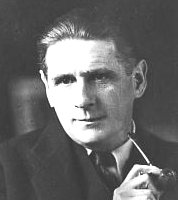Hermann Broch (Hermann Broch)

Hermann Broch was born in Vienna to a prosperous Jewish family and worked for some time in his family’s factory, though he maintained his literary interests privately. He was predestined to work in his father’s textile factory in Teesdorf, therefore, he attended a technical college for textile manufacture and a spinning and weaving college. In 1909 he converted to Roman Catholicism and married Franziska von Rothermann, the daughter of a knighted manufacturer. The following year, their son Hermann Friedrich Maria was born. Later, Broch began to see other women and the marriage ended in divorce in 1923. He was acquainted with Robert Musil, Rainer Maria Rilke, Elias Canetti, Leo Perutz, Franz Blei and his devoted friend and inspiration, writer and former nude model Ea von Allesch and many others. In 1927 he sold the textile factory and decided to study mathematics, philosophy and psychology at the University of Vienna. He embarked on a full-time literary career only around the age of 40. At the age of 45, his first novel, The Sleepwalkers, was published by Daniel Brody, for the Rhein Verlag in 1931/1932 in Munich. With the annexation of Austria by the Nazis (1938), Broch was arrested, but a movement organized by friends – including James Joyce – managed to have him released and allowed to emigrate; first to Britain and then to the United States, where he finished his novel The Death of Virgil and began to work, similar to Elias Canetti, on an essay on mass behaviour, which remained unfinished. Hermann Broch died in 1951 in New Haven, Connecticut. He is buried in Killingworth, Connecticut, in the cemetery on Roast Meat Hill Road. He was nominated for the Nobel Prize in Literature in 1950.
Born
- November, 01, 1886
- Vienna, Austria-Hungary
Died
- May, 05, 1951
- USA
- New Haven, Connecticut
Cemetery
- Union Cemetery
- Killingsworth, Connecticut
- USA



